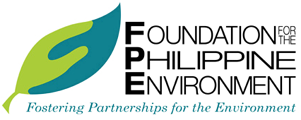News
The Higaonon of Misamis Oriental: Watchers of our Remaining Rainforests
Posted on March 1, 2016
Members of the Higaonon MAMACILA and Bantay-lasang forest guard volunteers. (FPE/MMarasigan)
In 2010, the European Union (EU) and Anthropology Watch (AnthroWatch) spearheaded the program, Consolidating Forest Corridors through Sustainable Ancestral Domain Management, in northern and central Mindanao. The initiative was carried out in partnership with environmental organizations, Non-Timber Forest Products Exchange Program (NTFP-EP), Upholding Life and Nature (ULAN), and the Foundation for the Philippine Environment (FPE). FPE implemented the reforestation component of the project using the Rainforestation concept, which uses only indigenous or native tree species to ensure the long-term sustainability and resiliency of the restoration efforts.
Critical to the success of the program is the participation of indigenous groups--the Higaonon (Misamis Oriental, Bukidnon) and the Subanen (Zamboanga Peninsula)--as the primary implementers of its component activities.

The MAMACILA Rainforestation site. (FPE/MMarasigan)
This article revisits, after five years, one of the Rainforestation (RF) sites established through the efforts of the MAMACILA (Mati, Manibay, Civoleg, and Langguyod communities) Apo Ginopakan Higaonon Tribal Council located in Claveria, Misamis Oriental.
MAMACILA has a total of 20 hectares of RF sites divided into small areas distributed across their ancestral domain. These sites are mostly Dipterocarpaceae species like White Lauan and Red Lauan and other native trees like Ulayan and Bitaog. For the project, wildlings and seedlings were collected from the mountains, with the former being placed into a chamber before transplanting them to the RF site.

Bae Puning is regarded as the messenger to the forest spirits. (FPE/MMarasigan)
Higaonons are described as the “people of the living mountains” and “people of the wilderness.” In their local culture, an elder named Bae nay-akuman Puning Asenas is considered a messenger to the forest spirits. Higaonon Bantay-lasang (forest guard volunteers) request guidance from her when they carry out their duties.
Bantay-lasang members generally patrol the entire Higaonon ancestral domain. In Sitio Civoleg, Bantay-lasang exercise initiative by conducting maintenance activities like brushing and weeding in the area on a quarterly basis.
MAMACILA planted citronella, a plant known for its essential oil, in this area. It provided alternative source of income for the local community once processed or sold as raw material.

Members of MAMACILA with an indigenous medicinal plant (Tikala) used for curing cough (either eaten raw or boiled). (FPE/MMarasigan)
At present, the young trees planted that now stand more than six feet add to the vegetation of MAMACILA’s ancestral domain and serve as a home to small fauna. Further studies are required to assess the longer term impacts of the project to date.

MAMACILA is also involved with the government’s National Greening Program. In 2015, their NGP site was an existing rainforest but they decided to perform enhancement planning in the area, covering 200 hectares. (FPE/MMarasigan)
In addition to the EU-AnthroWatch project, MAMACILA is also engaged to the National Greening Program (NGP) and has been implementing the program using the rainforestation concept since 2012.

The nursery of Pamalihi CADT, Inc., another Higaonon group and FPE partner. (FPE/MMarasigan)
Other Higaonon groups that implemented the project are the Pamalihi CADT, Inc., also based in Misamis Oriental, and the Kalanawan Tribal Council (KTC) of Bukidnon.
(Article contributed by Marjorie Marasigan, FPE NGP Officer.)
Read More:
- Executive Director Dr. Jerome L. Montemayor carried the banner of the Foundation for the Philippine Environment and the larger civil society during the SBSTTA 26 and SBI 4 meetings in Kenya
- Call for Proposals for the SGP-8 Country Programme Strategy
- #Y4B Ambassadors: JOEPET JEROME S. JARO
- #Y4B Ambassadors: MELLARD MANOGURA
- #Y4B Ambassadors: MARY JANE P. MAGAN
- #Y4B Ambassadors: SHRI TAHANIE B. MACAUMBAO

 DISPLAY CALENDAR
DISPLAY CALENDAR
 Read Policy Briefs
Read Policy Briefs
 View Our Partners
View Our Partners
 Access Grants MIS
Access Grants MIS
 Login to Webmail
Login to Webmail